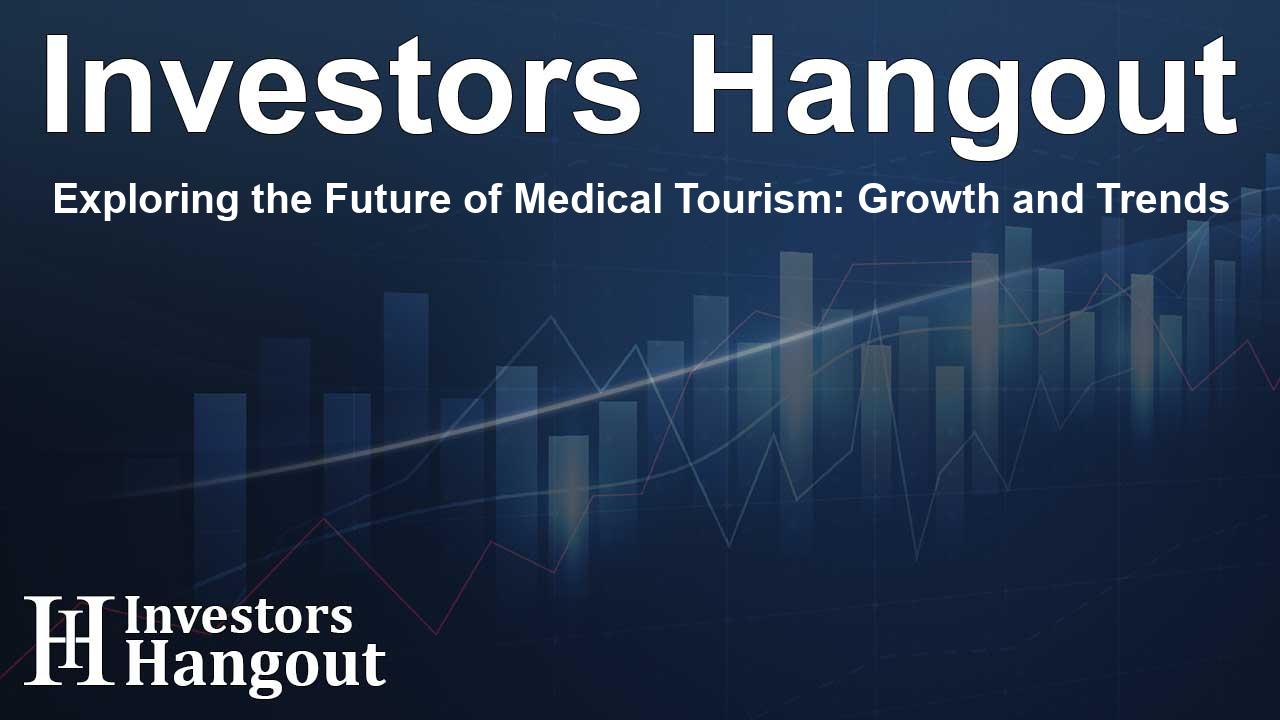Exploring the Future of Medical Tourism: Growth and Trends

The Flourishing Medical Tourism Market
The global medical tourism market is experiencing an extraordinary expansion, with projections indicating a growth from USD 41.79 billion in 2024 to a staggering USD 186.27 billion by 2034, representing a CAGR of 16.12%. This remarkable growth reflects a fundamental shift in how patients are beginning to view healthcare, particularly as they seek solutions outside their home countries.
Key Drivers of Market Expansion
The surge in medical tourism can primarily be attributed to escalating healthcare costs in developed nations. Patients are increasingly inclined to travel abroad where treatment options are available at significantly lower prices. Additionally, patients are searching for specialized procedures, sometimes not covered by insurance, including cosmetic enhancements and gender reassignment surgeries. This shift is particularly noticeable among the aging population and those who are uninsured or underinsured.
The Appeal of Cost-Effective Treatments
Countries like India, Thailand, and Malaysia have quickly become favored destinations due to their ability to provide advanced medical procedures at competitive prices. This phenomenon is drawing more tourists, affirming the necessity of affordable healthcare around the globe.
Emerging Technologies in Healthcare
Another driving force in medical tourism is the continual advancement of medical technology and treatment methods. Many facilities across various countries are equipped with cutting-edge technologies, allowing for innovative treatments that may not yet be available in patients’ home countries. This factor not only attracts tourists but also reassures them of the quality of care they will receive.
Holistic Wellness at Its Core
In addition to traditional medical procedures, the rise of wellness tourism significantly complements the growth of medical tourism. The increasing awareness of health and wellness options has prompted travelers to incorporate medical procedures with wellness services like spa treatments, holistic therapies, and rehabilitation programs.
The Growing Elderly Population
As the global population ages, particularly in developed countries, the demand for affordable healthcare solutions increases. This demographic shift has led seniors to seek medical assistance abroad, contributing to the growth of medical tourism. Patients are often attracted to countries where wait times are shorter, and healthcare services are driven towards patient-centric care.
Regional Insights into Medical Tourism
North America continues to dominate the medical tourism landscape, driven by high consumer expectations and advanced healthcare systems. Patients traveling from the U.S. and Canada are seeking affordable healthcare solutions in countries renowned for their quality medical services.
Asia Pacific: The Emerging Powerhouse
Simultaneously, the Asia Pacific region is projected to be the fastest-growing area for medical tourism. The comprehensive healthcare infrastructure in countries like India, Malaysia, and Thailand is being designed yet further to accommodate international patients. Additionally, public awareness and government initiatives to promote health tourism play crucial roles in stimulating growth.
Challenges Ahead
While the prospects appear promising, the medical tourism sector faces significant challenges, including quality control, ethical concerns, and regulatory issues across various countries. These factors can pose risks regarding patient safety and satisfaction, making transparency and trust fundamental challenges that need addressing.
Enhancing Patient Experience
To overcome hurdles, comprehensive patient support systems, including language assistance and seamless logistics, must be in place to improve the experience of medical tourists. The integration of these features into the healthcare service will foster a culture of trust and accountability.
Future Directions in Medical Tourism
Moving forward, it is vital for stakeholders within the medical tourism industry to adapt and innovate consistently. Understanding patient needs, leveraging technological advancements, and focusing on quality care will be key to capitalizing on this burgeoning market.
Frequently Asked Questions
What is medical tourism?
Medical tourism refers to traveling abroad for medical care, often to receive treatments that may be more affordable or unavailable locally.
What factors are driving the growth of the medical tourism market?
Key factors include rising healthcare costs in developed nations, the availability of advanced treatments abroad, and growing demand for wellness and specialized services.
What regions are leading in medical tourism?
North America currently leads the market, with Asia Pacific expected to grow the fastest, especially countries like India and Thailand.
What challenges does the medical tourism industry face?
Challenges include inconsistent care quality, regulatory issues, and communication barriers that can affect patient safety and satisfaction.
How can patient experience in medical tourism be improved?
Enhancing patient experience can be achieved through comprehensive support services, effective communication, and a focus on personalized care in treatment facilities.
About The Author
Contact Dominic Sanders privately here. Or send an email with ATTN: Dominic Sanders as the subject to contact@investorshangout.com.
About Investors Hangout
Investors Hangout is a leading online stock forum for financial discussion and learning, offering a wide range of free tools and resources. It draws in traders of all levels, who exchange market knowledge, investigate trading tactics, and keep an eye on industry developments in real time. Featuring financial articles, stock message boards, quotes, charts, company profiles, and live news updates. Through cooperative learning and a wealth of informational resources, it helps users from novices creating their first portfolios to experts honing their techniques. Join Investors Hangout today: https://investorshangout.com/
The content of this article is based on factual, publicly available information and does not represent legal, financial, or investment advice. Investors Hangout does not offer financial advice, and the author is not a licensed financial advisor. Consult a qualified advisor before making any financial or investment decisions based on this article. This article should not be considered advice to purchase, sell, or hold any securities or other investments. If any of the material provided here is inaccurate, please contact us for corrections.
